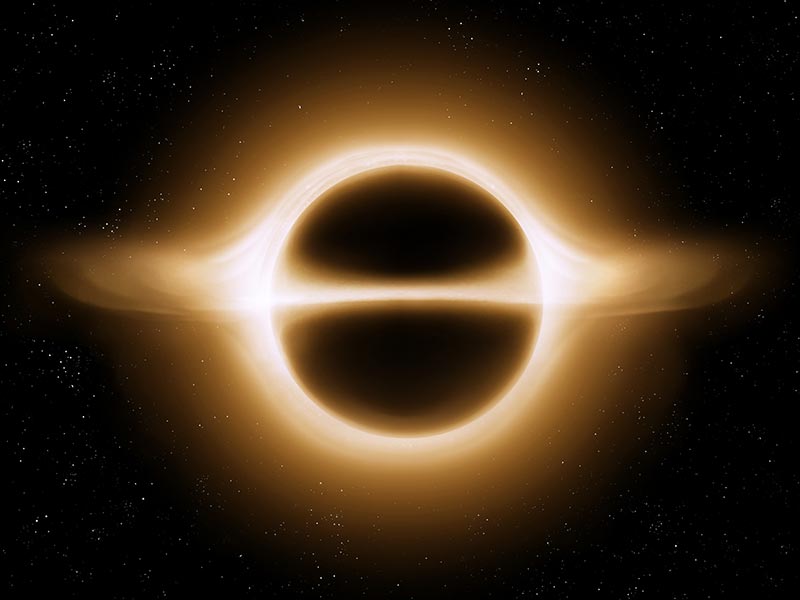The idea that we and everything in our universe might be a hologram is tied to a puzzling question in physics called the Black Hole Information Paradox.
When something falls into a black hole, the information describing it—like its shape, state, and properties—seems to vanish once it crosses the event horizon (the outer boundary of a black hole). But, according to quantum mechanics, information can’t just disappear. This creates a paradox when black holes eventually evaporate and the information seems lost forever.
Enter the holographic principle, which suggests that instead of being lost inside the black hole, the information is stored on its surface, or “event horizon.“
According to black hole thermodynamics, the amount of information a black hole can contain is proportional to the surface area of its event horizon—as mass or energy falls into a black hole, the surface area of the event horizon increases.
This was surprising to physicists because it suggests that all the information about what’s inside the black hole is somehow encoded on its surface. In other words, the 3D information inside the black hole might be “stored” or “projected” onto the 2D surface of the event horizon, much like how a hologram contains 3D images on a 2D surface.
So, if this is true for black holes, which have the highest information density possible, the same could easily apply to the entire universe. The holographic principle suggests that all the information in our 3D universe could actually be encoded on a distant 2D surface. This idea proposes that our 3D world might be a projection from a 2D boundary—just like a hologram projects 3D images from a 2D surface.
Related Articles
The History of Elevators—Lifting the World to New Heights
Elevators have been around for thousands of years—even the ancient Romans had pulley-based lifts. But the invention of the safety elevator in 1852 by Elisha Otis revolutionized modern cities. Otis’...
The Origins of Popcorn—A Snack with Ancient Roots
Popcorn has been popping up in history for thousands of years! The oldest popcorn ever discovered—over 5,600 years old—was found in a cave in New Mexico, proving that ancient civilizations enjoyed...
The Science of Fireflies—Nature’s Living Lanterns
Fireflies, also known as lightning bugs, are one of nature’s most magical sights. But their glow isn’t just for show—it’s a complex form of bioluminescence used for communication. Inside a firefly’s...





